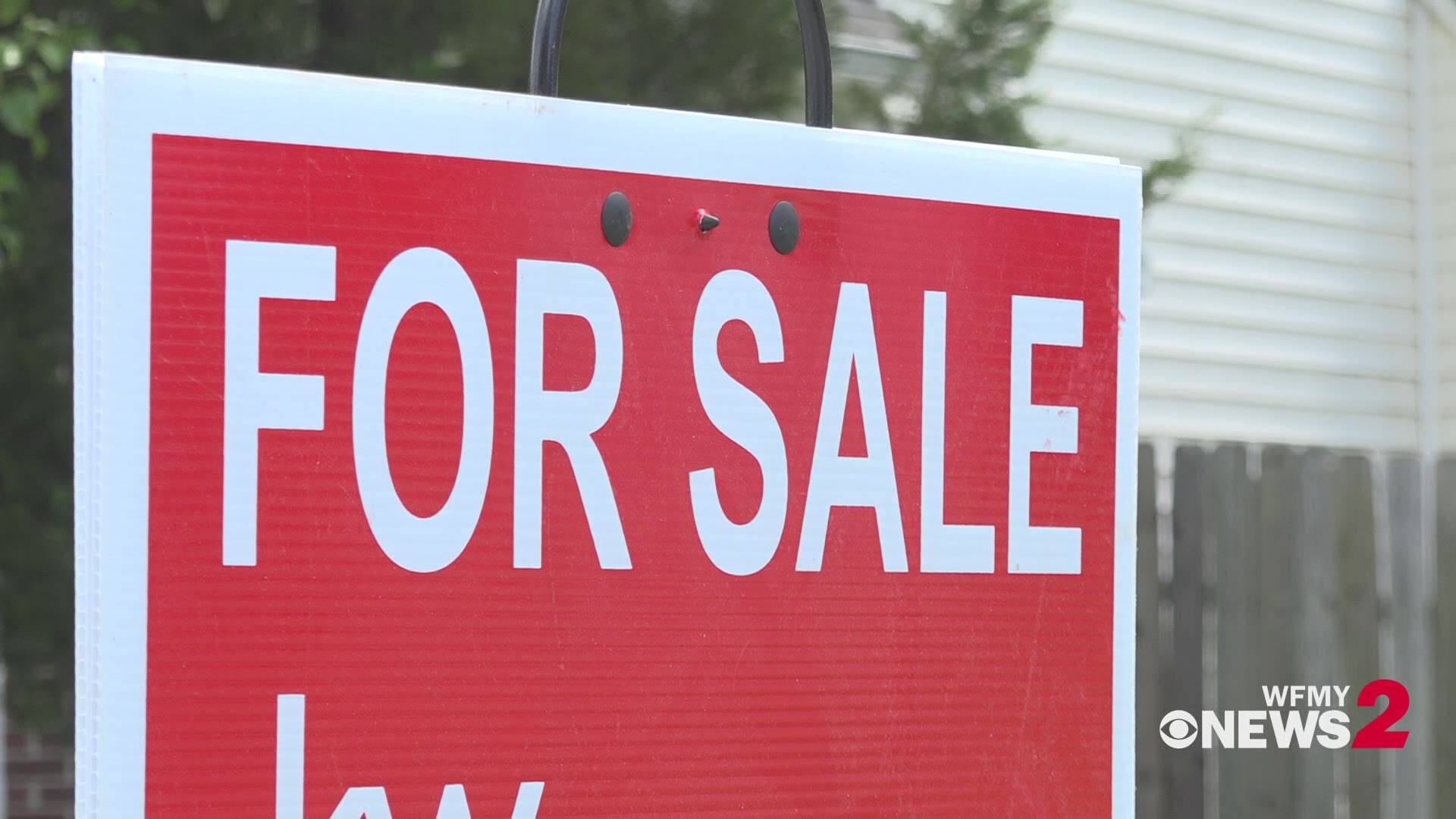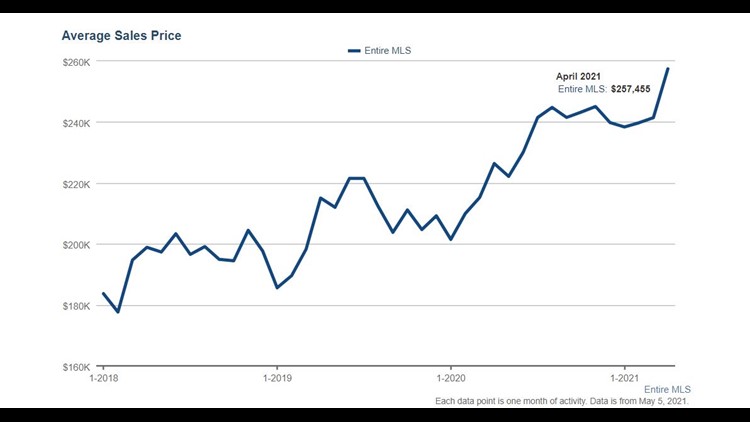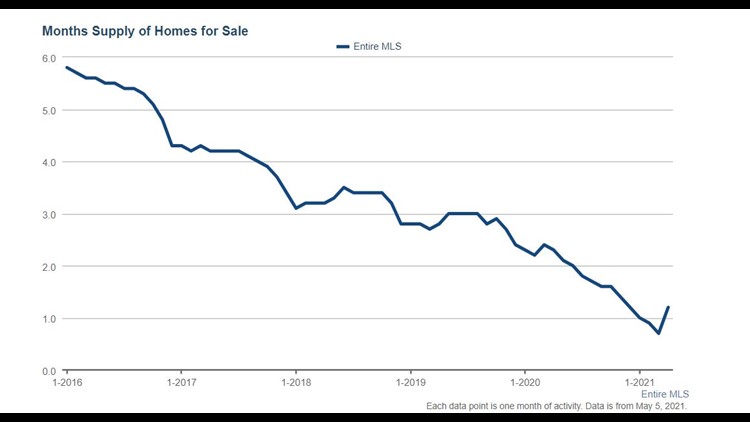GREENSBORO, N.C. — A major imbalance in the Triad's housing market has buyers and sellers deadlocked. Realtors say the seller's market could continue for years.
Homebuyers are having a notoriously difficult time finding properties to purchase. Some homes will receive 15-20 offers within a matter of days, making it extremely difficult for people to move.
WFMY News 2 sat down with Keller Williams' Jason Coleman to explain the state of the Triad's housing market.
Why it matters: The housing market moves in cycles, but local realtors believe this cycle is different. While some believe possible foreclosures or a housing bubble could quickly reverse the current trend others see a slower transition out of the seller's market.
This means the current feeding frenzy on homes could potentially be the norm for years, rather than months.
Why is this happening? - Demand. While the Triad has seen a falling amount of available homes decrease over the past five years, inventory fell off the table at the beginning of the pandemic, Coleman said. Coleman saw a majority of people take their homes off the market for fear of job loss or financial uncertainty during the spring of 2021.
This caused a restriction on the supply of homes, but many realtors believed the housing market would reset as time went along. Many did not account for what Coleman described as "the work-from-home" effect the Triad has experienced.
During the pandemic, people from high cost-of-living states like California and the northeast began searching for more affordable places to live as technology allowed them to work and live in different states, Coleman said. Demand for available homes skyrocketed, driving the price of homes through the roof.
Coleman said the sudden, massive appreciation then attracted real estate investors to the area, keen to cash in on the Triad's 'appreciation market.' This left local buyers competing with more and more out-of-state buyers, further driving up home appreciation, creating a cycle.
The problem? - Supply. Potential sellers have not put their homes on the market as much as normal before the pandemic.
Most sellers want to have a new home to move into before they list their homes on the market, but so few homes are available due to the fierce competition from buyers. This has played a huge role in halting the number of homes available, Coleman said.
Additionally, the Triad has historically been a place people settle, Coleman said. This means less people are likely to move away and put their homes on the market to sell than other cities, further constricting supply.
Jaw-dropping stats:
- If no more homes were built in the Triad today, inventory would run out in three weeks. Normally, it would take six months, Coleman said.
- The average sales price of Triad homes valued at $200,000 in January 2020 have appreciated more than $50,0000 in 14-months.
- Surveys in early 2020 projected average home values to reach $350,000 by 2030. Data trends suggest it is on pace to hit that mark before 2026.
Triad Housing Market Graphs Spring 2021
They said it:
- “I’m starting to basically call this a gold rush, because we’re having a lot of people moving here and staying here. We always have, but even more so in this COVID world.” - Jason Coleman, Keller Williams Realty
That's not all, folks: As if supply and demand isn't jammed enough, the cost of building materials, like lumber, have gone up due to pandemic-related shortages.
Not only does this slow the initial stages of construction, but it passes the cost onto buyers.
The bottom line: Many potential buyers may think sitting out the market and waiting for the supply and demand to neutralize is the best course of action.
However, even with whispers of foreclosures and a housing bubble, Coleman makes the case the shift back to a buyer's market will take longer than anticipated:
"It's not like it's just going to shift and turn into a buyer's market where you have one of 20 houses to choose from. It's going to fluctuate backwards through the spectrum from a seller's market into a buyer's market, but that could take five years before that happens. It's really tough to call what is going to make this shift and change the inventory," he said.
Jason Coleman's full explanation of the 2021 Triad Real Estate Market:






